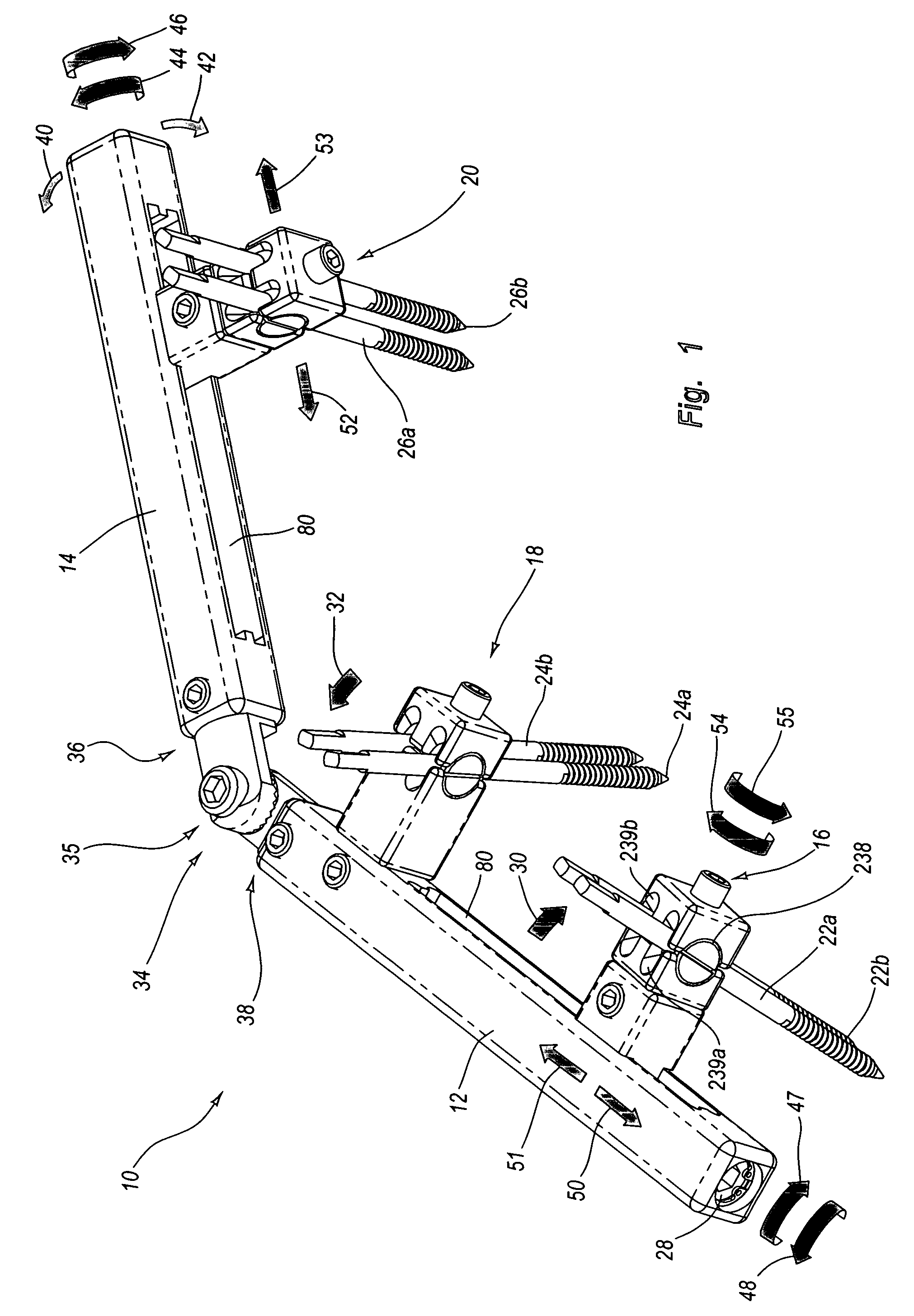Adjustable splint for osteosynthesis
a splint and adjustable technology, applied in the field of adjustable splint devices, can solve the problems of limiting the options of practitioners, the orientation of bone screws is also limited, and the connection of the splint to the longitudinal support is difficult to achiev
- Summary
- Abstract
- Description
- Claims
- Application Information
AI Technical Summary
Benefits of technology
Problems solved by technology
Method used
Image
Examples
Embodiment Construction
[0045]FIGS. 1-19 demonstrate examples of adjustable splints for osteosynthesis. FIG. 1 shows an adjustable splint 10 that is adjustable in more than one plane or axis, as illustrated by the arrows therein, thereby providing a variety of different, selectable splint configurations and treatment options for a practitioner. FIGS. 2-10 illustrate various individual components of splint 10, while FIGS. 11-14 illustrate various different positions in which the components of splint 10 can be moved to thereby provide adjustability and a variety of different optional configurations for the practitioner.
[0046]With reference now to FIG. 1, splint 10 has first and second main bodies 12, 14 to which respective first, second, and third mounts 16, 18, and 20 are coupled. Bone screws 22a-b, 24a-b, and 26a-b are coupled to respective mounts 16, 18, 20, and connect splint 10 to one or more selected bones during a bone splinting procedure. Each of these components may be selectively moved with respect...
PUM
 Login to View More
Login to View More Abstract
Description
Claims
Application Information
 Login to View More
Login to View More - R&D
- Intellectual Property
- Life Sciences
- Materials
- Tech Scout
- Unparalleled Data Quality
- Higher Quality Content
- 60% Fewer Hallucinations
Browse by: Latest US Patents, China's latest patents, Technical Efficacy Thesaurus, Application Domain, Technology Topic, Popular Technical Reports.
© 2025 PatSnap. All rights reserved.Legal|Privacy policy|Modern Slavery Act Transparency Statement|Sitemap|About US| Contact US: help@patsnap.com



